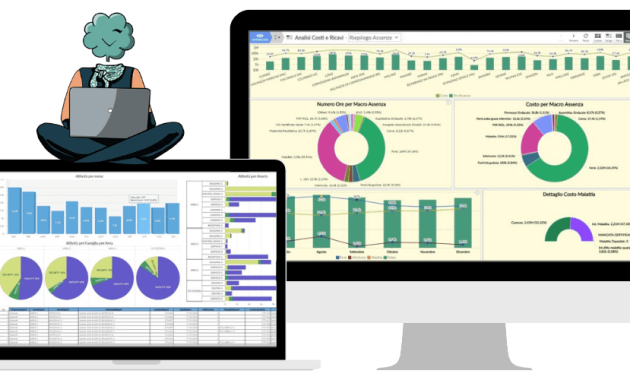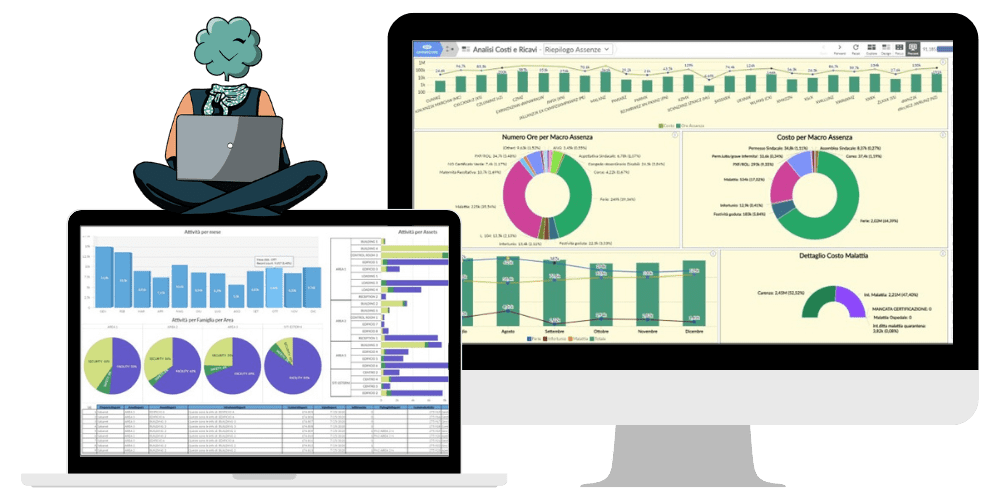
A Beginner’s Guide to Business Intelligence Software in Simple Steps: Unlock Data Insights
In today’s data-driven world, businesses are constantly seeking ways to gain a competitive edge. One of the most powerful tools available is Business Intelligence (BI) software. This software empowers organizations to analyze data, identify trends, and make informed decisions. For beginners, the world of BI can seem daunting. This guide provides a simplified, step-by-step introduction to Business Intelligence software. It will help you understand its core concepts and how to leverage it for your business success.
What is Business Intelligence Software?
Business Intelligence (BI) software refers to the applications and tools used to collect, analyze, and present business data. It transforms raw data into actionable insights. These insights then inform strategic and operational decisions. BI software helps businesses understand past performance, current trends, and potential future outcomes. This understanding is crucial for making informed decisions and driving business growth.
At its core, BI software offers a range of functionalities. These include data extraction, data warehousing, data analysis, reporting, and data visualization. By integrating these elements, BI solutions provide a comprehensive view of a business’s performance. This allows for better decision-making across all departments.
Key Benefits of Using Business Intelligence Software
Implementing Business Intelligence software offers numerous advantages for businesses of all sizes. Here are some key benefits:
- Improved Decision-Making: BI tools provide data-driven insights. This empowers businesses to make more informed decisions. Decisions are based on facts, not just intuition.
- Enhanced Efficiency: BI software automates data analysis and reporting processes. This saves time and reduces manual effort. Employees can focus on more strategic tasks.
- Increased Profitability: By identifying trends and opportunities, BI helps businesses optimize operations. This leads to increased revenue and reduced costs.
- Better Customer Understanding: BI software analyzes customer data. This provides insights into customer behavior, preferences, and needs. This helps businesses improve customer satisfaction and loyalty.
- Competitive Advantage: By providing real-time insights, BI enables businesses to respond quickly to market changes. This helps businesses stay ahead of the competition.
Core Components of Business Intelligence Software
Understanding the core components of Business Intelligence software is essential. These components work together to provide a complete BI solution. Here are the key elements:
Data Sources
Data sources are the foundation of any BI system. These can include databases, spreadsheets, cloud applications, and other data repositories. BI software connects to these sources to collect relevant data. This data is then used for analysis and reporting.
Data Extraction, Transformation, and Loading (ETL)
ETL is the process of extracting data from various sources. The data is then transformed to fit a standardized format. Finally, the data is loaded into a data warehouse or data mart. This process ensures data quality and consistency.
Data Warehousing
A data warehouse is a central repository for all of a business’s data. It stores historical and current data. The data is organized for easy analysis and reporting. Data warehousing provides a single source of truth for business data.
Data Analysis
Data analysis involves using various techniques. These include statistical analysis, data mining, and predictive modeling. The goal is to identify patterns, trends, and insights within the data. Data analysis helps businesses understand their performance and make better decisions.
Reporting and Data Visualization
Reporting and data visualization are essential for communicating insights. BI software generates reports, dashboards, and charts. These visually present data in an easy-to-understand format. This allows users to quickly grasp key insights and trends.
Simple Steps to Get Started with Business Intelligence Software
Getting started with Business Intelligence software doesn’t have to be complex. Follow these simple steps:
Define Your Business Goals
Before implementing any BI solution, define your business goals. What key questions do you need to answer? What decisions do you want to improve? Clearly defined goals will guide your BI implementation.
Identify Data Sources
Determine which data sources are relevant to your goals. This includes databases, spreadsheets, and other systems. Identify where the data you need is stored. Ensure you have access to these data sources.
Choose the Right BI Software
Select a BI software solution that meets your needs. Consider factors like ease of use, features, and cost. Research different vendors. Explore user reviews before making a decision. Some popular options include Tableau, Power BI, and QlikView. [See also: Best BI Software for Small Businesses]
Extract, Transform, and Load Your Data
Use ETL tools to extract, transform, and load your data. This process prepares your data for analysis. Ensure your data is clean, consistent, and accurate. Many BI software solutions include built-in ETL capabilities.
Create Reports and Dashboards
Build reports and dashboards to visualize your data. Use charts, graphs, and tables to present your findings. Focus on the key metrics that matter to your business goals. Customize your reports to meet your specific needs.
Analyze and Interpret Data
Analyze the data presented in your reports and dashboards. Look for trends, patterns, and outliers. Interpret the data to gain insights into your business performance. Use these insights to make informed decisions.
Share and Collaborate
Share your reports and dashboards with relevant stakeholders. Encourage collaboration and discussion. This ensures everyone is informed and aligned. Use BI software’s collaboration features to facilitate communication.
Continuously Improve
BI is an ongoing process. Continuously refine your reports and dashboards. Adjust your data analysis based on new insights. Regularly review your business goals. Adapt your BI strategy to meet evolving needs.
Choosing the Right Business Intelligence Software
Selecting the right Business Intelligence software is crucial for success. Consider the following factors:
- Ease of Use: Choose software that is user-friendly and easy to navigate. This reduces the learning curve and increases user adoption.
- Features: Ensure the software offers the features you need. This includes data integration, analysis, reporting, and visualization capabilities.
- Scalability: Select software that can scale with your business growth. This ensures the software can handle increasing data volumes and user needs.
- Integration: Check if the software integrates with your existing systems. This includes databases, spreadsheets, and other applications.
- Cost: Consider the total cost of ownership. This includes software licensing, implementation, and ongoing maintenance costs.
- Support: Choose a vendor that provides good customer support and training. This helps ensure you can effectively use the software.
Examples of Business Intelligence Software in Action
Business Intelligence software is used in various industries and departments. Here are some examples:
- Retail: Retailers use BI to analyze sales data. This helps them optimize inventory, pricing, and promotions. They can also identify customer buying patterns.
- Healthcare: Healthcare providers use BI to analyze patient data. This improves patient care, reduces costs, and optimizes resource allocation.
- Finance: Financial institutions use BI to analyze financial data. This helps them manage risk, detect fraud, and improve customer service.
- Marketing: Marketers use BI to analyze campaign performance. This helps them optimize marketing spend and improve ROI.
- Manufacturing: Manufacturers use BI to analyze production data. This helps them improve efficiency, reduce waste, and optimize supply chains.
Conclusion
Business Intelligence software is a powerful tool for businesses. It helps them make data-driven decisions, improve efficiency, and gain a competitive edge. By following the simple steps outlined in this guide, you can begin your journey with BI. Start unlocking the power of your data today. Embrace the possibilities that BI offers. Transform your business into a data-driven organization. The future of business intelligence is bright. The power of data awaits.
Remember to start small, define your goals, and choose the right software. Continuously analyze and refine your BI strategy. The ability to derive insights from data will be critical. The future of business depends on it. Business Intelligence software is key to this future. Take the first step. Start your BI journey today.

